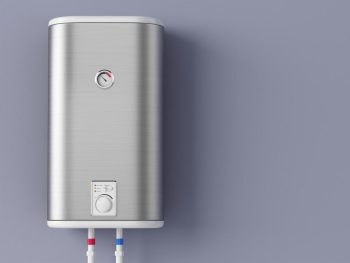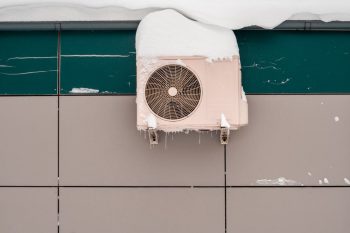
Dryer sheets are a common household staple, known for their ability to reduce static cling, soften fabrics, and infuse a fresh scent into your laundry. However, have you ever wondered what happens if you use too many dryer sheets? In this comprehensive guide, we delve into the effects of overusing dryer sheets, the potential risks, and the viable alternatives that can be used to avoid these issues.
Using too many dryer sheets can lead to residue on clothes, potential health risks due to overexposure to harmful chemicals, reduced dryer efficiency, and environmental pollution. It can also trigger allergic reactions in some individuals. Alternatives to dryer sheets include vinegar, wool dryer balls, aluminum foil balls, and baking soda.
The Role of Dryer Sheets in Laundry
Dryer sheets are thin, disposable sheets typically made from non-woven synthetic fabric or cellulose fibers. They’re coated with a concoction of liquid softeners, lubricants, and fragrances. When heated in the dryer, these ingredients are released onto the fabrics, making them feel softer to the touch, reducing static electricity, and imparting a pleasant fragrance.
The Downside of Using Too Many Dryer Sheets
While it may be tempting to add extra dryer sheets to boost fragrance or softness, doing so can have several negative effects. Here’s what can happen if you go overboard with dryer sheets:
1. Residue on Clothes
Dryer sheets work by coating fabrics with a softening agent. Using too many can leave a noticeable residue on your clothes. This can not only irritate the skin but also affect the performance of certain fabrics. For instance, it can reduce the water-absorbency of cotton and microfiber towels and hinder the moisture-wicking action of athletic wear.
2. Health Risks
Excessive dryer sheets expose you to higher levels of potentially harmful chemicals. These chemicals can cause health problems like asthma attacks, skin irritation, and hormone disruption. Some of the chemicals found in commercial dryer sheets include Benzyl acetate, linked to pancreatic cancer, and Ethanol, listed on the EPA’s Hazardous Waste list.
3. Reduced Dryer Efficiency
Dryer sheets can leave a coating of residue inside your dryer, which can interfere with its ability to dry clothes properly and affect its operating efficiency. Over time, this residue may clog the lint filter, reduce air circulation, and potentially lead to overheating.
Environmental Implications
Dryer sheets have several environmental implications. They contribute to landfill waste, can cause chemical pollution in waterways, and release volatile organic compounds (VOCs) into the air. Additionally, they’re often made from synthetic polyester, a non-biodegradable material that leaves remnants in the environment.
Health Issues and Allergic Reactions
Dryer sheets can cause health issues or allergic reactions. Symptoms of an allergic reaction may include reddened skin, itchy hives, and swollen skin around the rash. The fragrances, preservatives, and surfactants in dryer sheets can trigger allergic reactions such as contact dermatitis.
Alternatives to Dryer Sheets
If you’re concerned about the potential risks associated with dryer sheets, consider these alternatives:
- Vinegar: Add 1/2 cup of apple cider vinegar to your washing machine during the rinse cycle to soften clothes and prevent static cling.
- Wool Dryer Balls: These can be used to soften clothes, reduce static, and shorten drying time.
- Aluminum Foil Balls: Crumple a piece of aluminum foil into a ball and toss it in the dryer with your wet clothes to soften them and reduce static.
- Baking Soda: Add 1/4 cup of baking soda to your washing machine during the wash cycle to soften clothes and reduce static.
Remember, moderation is key when using dryer sheets. Using too many can lead to unwelcome consequences, but using them properly or opting for alternatives can provide the benefits you’re after without the potential drawbacks.
Frequently Asked Questions
Are all dryer sheets harmful?
Not all dryer sheets are harmful. However, many commercial dryer sheets contain chemicals that can be harmful if used excessively or if you have a sensitivity or allergy to them. Opt for fragrance-free, hypoallergenic, or natural dryer sheets if you are concerned.
How many dryer sheets should I use per load?
Generally, one dryer sheet per load is sufficient to reduce static and soften clothes. However, for larger loads, you may need to use two.
Can I reuse dryer sheets?
Yes, you can reuse dryer sheets for smaller loads. However, the effectiveness will be reduced after each use.
Can I use vinegar and baking soda together as an alternative to dryer sheets?
Yes, you can use vinegar and baking soda together. Add vinegar during the rinse cycle and baking soda during the wash cycle. However, don’t mix them together directly as they will react to each other, creating foam and reducing their effectiveness.
Can I make my own homemade dryer sheets?
Yes, you can make your own homemade dryer sheets. One common method involves soaking cloth squares in a mixture of vinegar and essential oils, then allowing them to dry. You can use these homemade sheets just like store-bought ones.












